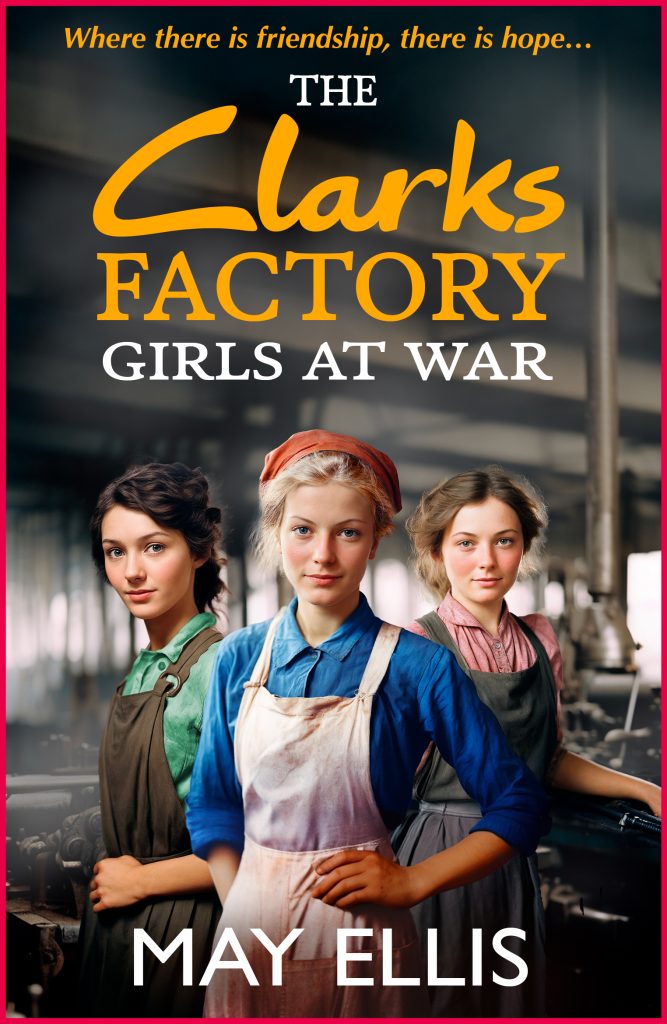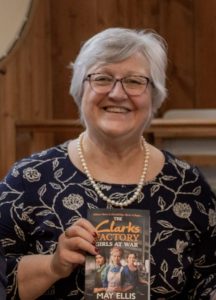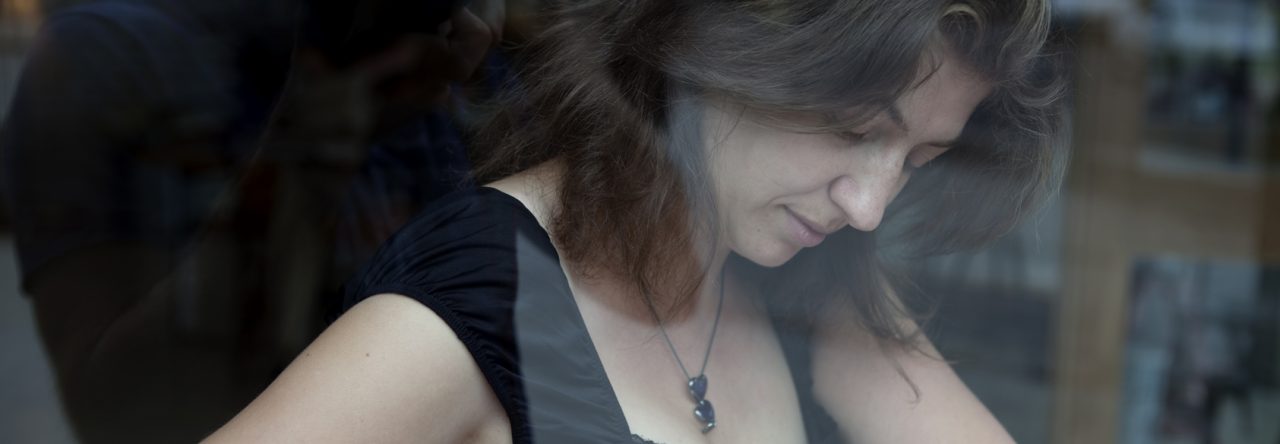This week, I’m delighted to welcome May Ellis, to share the #openinglines of her massively successful saga, The Clarks Factory Girls at War.

Blurb
Can love blossom in times of trouble?
Life-long friends Louisa, Jeannie and Kate are following in the footsteps of their families, working at the Clarks shoe factory.
But when Britain declares war on Germany, the Somerset village of Street is shaken to its core. The Clarks factory is at the heart of life in the village, but the Clark family are Quakers and pacifists. Before long, there are fierce debates amongst the workers and tensions between those who oppose the war and those who believe the village men should go to fight.
Each of the girls must decide her own position but as brothers and sweethearts leave for France, Louisa is relieved that her sweetheart Mattie, a Quaker, who won’t be signing up. But she’ll soon find that they face fierce opposition at home as well as across the Channel.
Will the girls’ friendship be enough to keep them together, as everything around them falls apart?
A heartwarming and gripping new saga series perfect for fans of Elaine Everest and Rosie Clarke.
***
Most of us have worn a pair of Clarks shoes at some point in our lives. Welcome to the village of Street in Somerset where friends Kate, Louisa and Jeannie work together in the Machine Room at the Clarks boot and shoe factory. The Clark family are major employers in the area, providing jobs for over four thousand workers. As Quakers, the Clarks live by the ethos of service and peace, and the local community benefits from their employers’ philanthropy.
Life is about to change drastically for the Clarks factory girls. The story starts on the day after war has been declared.

First 500 words of The Clarks Factory Girls at War by May Ellis.
August 1914
‘I can’t believe we’ve been at Clarks for two years already,’ said Louisa. ‘Do you remember our first day? We thought we were so grown up, didn’t we?’ She laughed. ‘We were so wet behind the ears. We’ve learned a lot since then.’
Her friends Jeannie and Kate laughed with her as the three of them climbed the stone steps to the Machine Room where they worked on the third floor of the main factory building. Above and below them was a steady stream of women and girls, all heading in the same direction. The three of them linked arms, their heads close together so they could hear each other above the noise of boots on the steps and the women’s chatter, as they’d done every day for the past two years since they started work together on this very day.
‘Oh, my word, I was so scared,’ said Kate. ‘I was so glad you two were with me, or I’m sure I’d have turned tail and run.’
That surprised Louisa, because Kate always seemed so fearless. She was the first to argue, the last to back down and she had the loudest laugh of the three of them. ‘Why were you scared?’ she asked.
Kate shrugged. ‘I stood in the doorway, looking around that huge room. It was noisy and smelly and… I don’t know… overwhelming, I suppose.’
‘I know what you mean,’ said Jeannie. She was the quietest of the trio, brought up in a Quaker family, generations of whom had worked for Clarks and worshipped alongside the family who owned the factory. She had a calm and thoughtfulness that Louisa appreciated and didn’t often find amongst her other acquaintances.
‘I always knew a lot of women worked in here,’ Kate went on, ‘including my sister Peg until she got married, but seeing all three hundred of them in the one big room was a shock.’
Jeannie nodded. ‘The smell of the machine oil and the leather made me feel sick. I was sure I’d skewer my hands on the machines the first time I used them, and the foreman scared me to death.’
The industrial sewing machines on which the girls were trained to stitch shoe linings were big and fierce, as was Mr Briars, the foreman. It had taken some getting used to, and many a week had passed before they got the hang of the machines and didn’t lose a good portion of their wages by being charged for wasted thread when they made mistakes and had to unpick their pieces.
‘I’m glad we started together,’ said Louisa, remembering her own nervousness on her first day at work.
‘So am I,’ said Jeannie. ‘Being with you both, my best friends from school, made it more exciting than frightening. And it was lucky Mr Briars used the same system as our teachers of putting girls in alphabetical order, so we got to stay together – Jeannie, Kate and Louisa – J. K. L.’
Louisa squeezed her arm. ‘I …
***
If you’d like to buy a copy of May’s latest novel, you can buy it here:
https://mybook.to/clarksfactorysocial
 Author Bio
Author Bio
Readers may have come across May Ellis under her other pen name of Alison Knight. She has been a legal executive, a registered childminder, a professional fund-raiser and a teacher. She has travelled the world – from spending a year as an exchange student in the US in the 1970s and trekking the Great Wall of China to celebrate her fortieth year and lots of other interesting places in between. She founded Imagine Creative Writing with Jenny Kane with whom she organises regular writing retreats.
In her mid-forties she went to university part-time and gained a first-class degree in Creative Writing at Bath Spa University and an MA in the same subject from Oxford Brookes University, both while still working full-time.
She signed her first three-book publishing contract with Accent Press a year after she completed her master’s degree. Three further books were published by Darkstroke books in 2020-21. The Clarks Factory Girls at War, written as May Ellis and published by Boldwood Books, is her seventh novel and the first in a five-book series.
This new May Ellis saga series with Boldwood Books focusses on three friends, Kate, Louisa and Jeannie, who work at the Clarks shoe factory in Somerset in the First World War.
Social Media Links
https://www.facebook.com/alison.knight.942
https://www.alisonroseknight.com/
Many thanks to May, for sharing her opening lines.
Happy reading,
Jenny x
